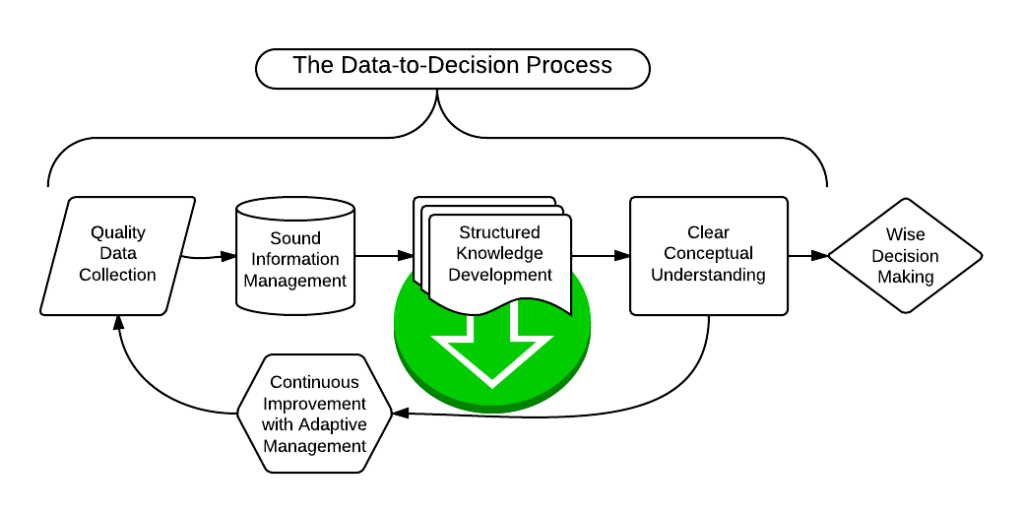Knowledge development is the process of describing the patterns in your data. It is akin to the process of descriptive science. The goal here is to describe the component part of the overall system that you are studying.
In the fisheries, these may include:
- Species occurrence and abundance
- Size class structure
- Movement patterns
- Habitat delineations
In the hydrology, these may include:
- Stage/discharge relationships
- Environmental flow characteristics
- Stream type and reach classifications
- Streambank erosion potential
These, and many other standard relationships describe how general patterns are modified by local conditions. Understanding how your local system works is critical to determining the impact of management options. For example, one river may be dependent on snowmelt while another may be dependent on groundwater inputs. The timing and magnitude of high flows will be substantially different between these two rivers and management models need to have the correct local pattern to support logical resource use. These standard relationships become the component inputs to the larger system models in the next data to decision step.
PAEC can help you with developing these important relationships by embedding appropriate analyses and results directly into your information management environment. Now, as new data are collected and added to your database, up-to-date relationships with all of their best-fit predictions and associated levels of uncertainty are automatically generated. This approach speeds knowledge discovery and avoids costly delays in finding out the results of specific studies.

